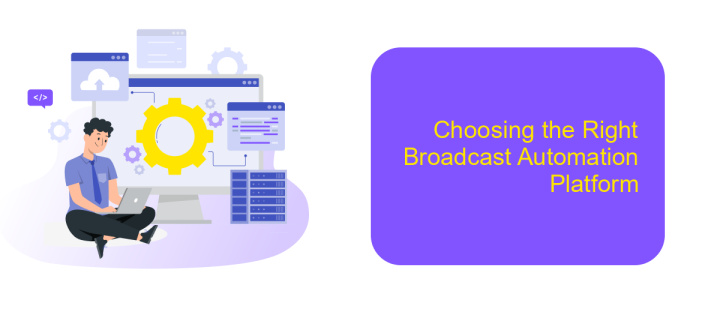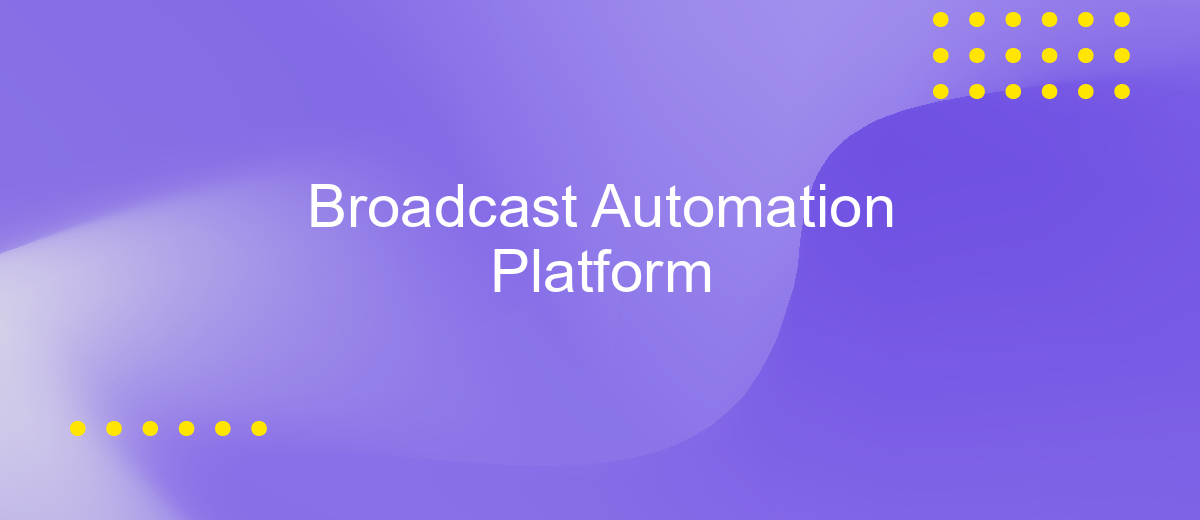Broadcast Automation Platform
In today's fast-paced media landscape, broadcast automation platforms have become essential tools for streamlining operations and enhancing efficiency. These platforms enable broadcasters to manage content delivery seamlessly, reduce human error, and optimize resource allocation. By automating tasks such as scheduling, playout, and monitoring, broadcasters can focus on creating high-quality content and engaging their audiences, ensuring a competitive edge in an ever-evolving industry.
Introduction to Broadcast Automation Platform
In the rapidly evolving world of broadcasting, automation platforms have become indispensable tools for streamlining operations and enhancing efficiency. These platforms integrate various functions such as scheduling, content management, and distribution, enabling broadcasters to deliver seamless and high-quality content to their audiences. By leveraging advanced technologies, broadcast automation platforms reduce manual intervention, minimize errors, and optimize resource allocation.
- Efficient scheduling of programs and advertisements
- Centralized content management and storage
- Automated playout and distribution processes
- Real-time monitoring and analytics
- Scalability and adaptability to changing needs
Adopting a broadcast automation platform is a strategic move for broadcasters aiming to stay competitive in a fast-paced industry. These platforms not only streamline workflows but also enable broadcasters to focus on creative and strategic efforts. As technology continues to advance, the capabilities of broadcast automation platforms will expand, offering even more opportunities for innovation and growth in the broadcasting sector.
Key Features and Functionalities

The Broadcast Automation Platform offers a comprehensive suite of features designed to streamline broadcasting operations. Its intuitive interface allows users to easily schedule, manage, and automate content delivery across multiple channels. The platform supports a wide range of media formats, ensuring seamless integration into existing workflows. Advanced analytics tools provide real-time insights into audience engagement, enabling broadcasters to optimize content strategy effectively. Additionally, the platform's robust security measures safeguard content and data, ensuring compliance with industry standards.
Integration capabilities are a standout feature, with support for various third-party services, including ApiX-Drive. This service facilitates seamless integration with existing systems, allowing for automated data exchange and synchronization. Users can effortlessly connect with other platforms, enhancing operational efficiency and reducing manual tasks. The platform's scalability ensures it can grow alongside your business, accommodating increasing demands without compromising performance. With its versatile functionalities, the Broadcast Automation Platform is an essential tool for modern broadcasters seeking to optimize their operations and deliver high-quality content consistently.
Benefits of Using a Broadcast Automation Platform

Broadcast automation platforms have revolutionized the way media content is managed and distributed, offering numerous advantages for broadcasters. These platforms streamline operations, reduce costs, and enhance content delivery efficiency. By automating repetitive tasks, broadcasters can focus on creating high-quality content and engaging with their audience more effectively.
- Increased Efficiency: Automation reduces manual intervention, speeding up the content scheduling and delivery process.
- Cost Savings: By minimizing human errors and optimizing resource allocation, broadcasters can significantly cut operational expenses.
- Scalability: Platforms can easily adapt to increased content volumes and distribution channels, ensuring smooth operations as the business grows.
- Improved Accuracy: Automated systems ensure consistent and precise content delivery, maintaining high standards of broadcast quality.
- Enhanced Flexibility: Broadcasters can quickly adjust programming schedules and content distribution in response to changing audience demands.
Ultimately, adopting a broadcast automation platform empowers broadcasters to stay competitive in a rapidly evolving media landscape. By leveraging these technologies, they can deliver content more effectively, improve viewer satisfaction, and drive business growth. As the media industry continues to evolve, the benefits of automation will become increasingly crucial for sustainable success.
Choosing the Right Broadcast Automation Platform

Choosing the right broadcast automation platform is crucial for streamlining operations and enhancing the efficiency of your broadcasting workflow. With numerous options available, it's essential to evaluate your specific needs and objectives before making a decision. Consider factors such as scalability, integration capabilities, and user-friendliness.
Begin by assessing the size and scope of your broadcasting operations. A small local station may have different requirements compared to a large national network. Understanding your unique needs will help narrow down the options and focus on platforms that align with your goals.
- Scalability: Ensure the platform can grow with your operations.
- Integration: Check compatibility with existing systems.
- User Experience: Look for intuitive interfaces and ease of use.
- Support: Consider the availability of technical support and training.
- Cost: Evaluate pricing models and total cost of ownership.
Ultimately, the right broadcast automation platform should enhance your workflow, reduce manual tasks, and provide reliable performance. By carefully considering your needs and evaluating potential solutions, you can select a platform that supports your broadcasting goals and adapts to future challenges.
Future of Broadcast Automation Platforms
The future of broadcast automation platforms is poised to be transformative, driven by advancements in artificial intelligence and machine learning. These technologies will enable more sophisticated content scheduling, personalized viewer experiences, and real-time data analytics, allowing broadcasters to optimize their operations and engage audiences more effectively. As the demand for on-demand and live streaming content grows, automation platforms will need to adapt, offering more flexible and scalable solutions to meet the dynamic needs of the industry.
Integration capabilities will be crucial in the evolution of broadcast automation platforms. Services like ApiX-Drive will play a significant role by simplifying the process of connecting various tools and systems, ensuring seamless workflows and data synchronization. This will empower broadcasters to automate complex tasks and focus on content creation and distribution. Additionally, the rise of cloud-based solutions will further enhance the accessibility and efficiency of these platforms, enabling broadcasters to manage their operations remotely and collaborate across geographies with ease.
FAQ
What is a Broadcast Automation Platform?
How does a Broadcast Automation Platform improve broadcasting efficiency?
Can a Broadcast Automation Platform integrate with existing systems?
What are the key features to look for in a Broadcast Automation Platform?
How can I ensure the security of my content on a Broadcast Automation Platform?
Apix-Drive is a universal tool that will quickly streamline any workflow, freeing you from routine and possible financial losses. Try ApiX-Drive in action and see how useful it is for you personally. In the meantime, when you are setting up connections between systems, think about where you are investing your free time, because now you will have much more of it.

